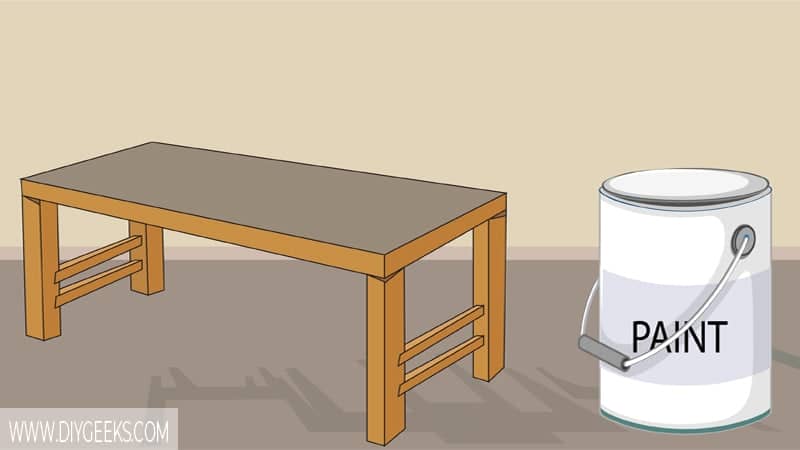Varnish is a transparent finish known to protect, seal, and enhance paint finishes and surfaces. So, can you paint over varnished wood?
You can’t paint over varnished wood directly unless you sand the finish or apply paint primer over it. Sanding will remove different parts of the finish while a paint primer will cover the varnish and provide a base coat for the paint to stick to.
For the best paint adhesion, you must either sand the varnish or remove it completely.
Can You Paint Directly Over Varnished Wood?
You can’t paint directly over varnish wood as the varnish coating will prevent paint adhesion. You must either remove the varnish coating or sand it off before applying a paint coating over it.
Varnish is a topcoat with a traditional formula; it’s made of resins (such as polyurethane or alkyd), solvents (water or oil), and additives that create a protective layer over a surface and paint and prevent liquids from penetrating it.
You must either remove the varnish coating with a paint-stripping compound or sand it with coarse or medium-grit sandpaper to create tiny pores (or holes) that the paint can penetrate and adhere to.
Why Doesn’t Paint Stick To Varnish?
Paint doesn’t stick to varnish because the sealer forms a glossy moisture-resistant coating that prevents paint penetration or adhesion.
Varnish is designed to be the final topcoat and can’t be painted over as its coating repels liquids.
The paint won’t stick and will peel off if you apply it directly over a varnish coating without sanding or priming.
How To Paint Over Varnished Wood?
To paint over varnished wood, do the following things.
- Inspect the Surface.
- Stress Sand the Surface.
- Sand the Surface Again.
- Apply Paint Primer (Optional).
- Apply Paint.
- Seal the Finish.
The tools you need for this project are listed below.
- Fine-Grit Sandpaper
- Water-based Acrylic Paint
- Latex Primer
- Paintbrush
- Drop Cloth
- A Sealer
1. Inspect the Surface
Inspect the surface to see if it’s rotten, or damaged, or if you must repair it. To repair rotten or damaged wood, use wood filler.
2. Stress Sand the Finish

You don’t need to remove the entire varnish coating to paint over it — just remove different parts to create pores (or holes) that paint can penetrate to.
To sand varnished wood before painting, use coarse-grit sandpaper (40-grit) or medium-grit sandpaper (100-grit).
Coarse-grit sandpaper will remove the entire varnish coating, while medium-grit sandpaper will create tiny pores (holes) in the finish.
To remove the varnish coating from wood without sanding, use a paint-stripping compound.
3. Sand the Surface Again
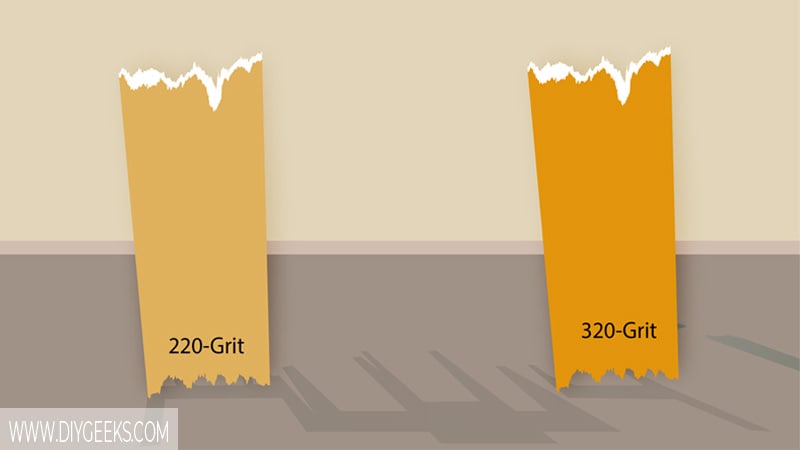
Sand the surface with fine-grit sandpaper (220-grit) to remove imperfections and bumps, and make the surface paint ready.
If the surface doesn’t have many imperfections or bumps, sand with extra fine-grit sandpaper (440-grit).
Remove the dust with a clean rag or vacuum after sanding.
4. Apply Paint Primer (Optional)
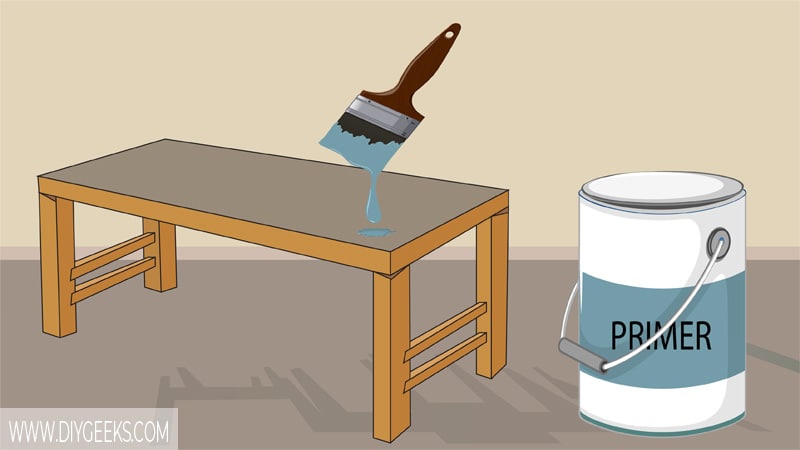
Apply one or two (1-2) stain-blocking primer coats over the varnish wood. Wait until one coat dries before applying the next one.
The paint primer will adhere over the varnish and cover it, and provide a smooth base coat for the paint to adhere to. So, the paint will adhere over primer and not varnish coating.
Primer is formulated with extra binders that improve its adhesive qualities so it can adhere to surfaces where paint can’t.
However, primer has a natural color and will cover the wood grain too.
5. Apply Paint
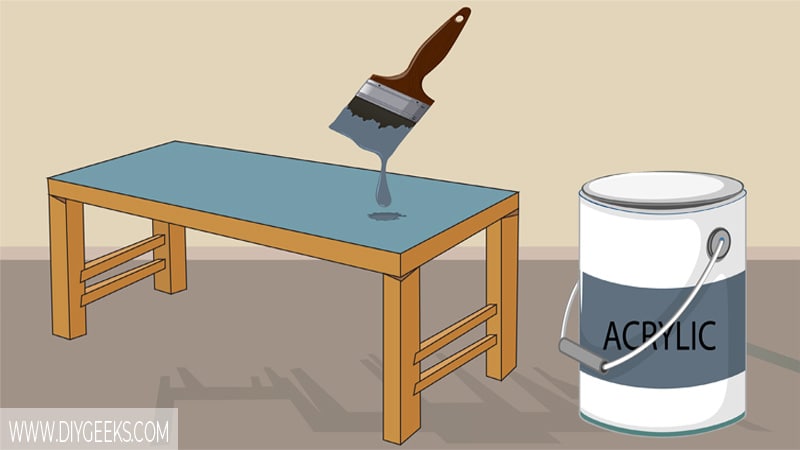
Apply two (2) paint coats with a paintbrush, roller, or sprayer. Wait until one coat dries before applying the next one.
Note: You can use any type of paint you want.
6. Seal the Finish
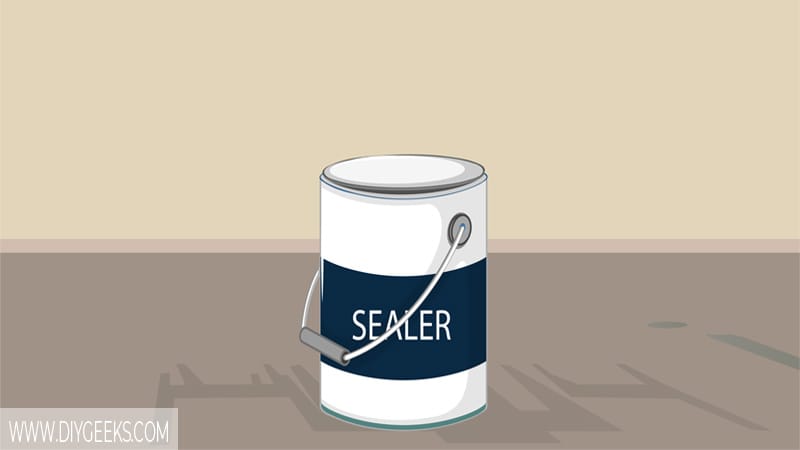
After the final paint coating cures (fully dries), seal the finish with a sealer, such as polyurethane or varnish.
The sealer will produce a transparent glossy moisture-resistant coating over the paint and protect it from moisture, water, scratches, and other elements.
Related Read: Using Varnish Over Old Varnish?
What Types of Paints To Use Over Varnish?
You can use any type of paint over a varnish finish if you prep the finish properly. To prep a varnish finish before painting, sand and prime it or remove it completely.
Use oil-based paint if the surface is exposed to constant water or moisture and needs more protection. Use water-based paint for indoor surfaces and to create a colorful finish.
Ensure to seal the paint finish for outdoor surfaces as neither oil-based nor water-based paint can protect a surface from weather elements, such as rainfall.
Can You Paint over Varnish Without Sanding?
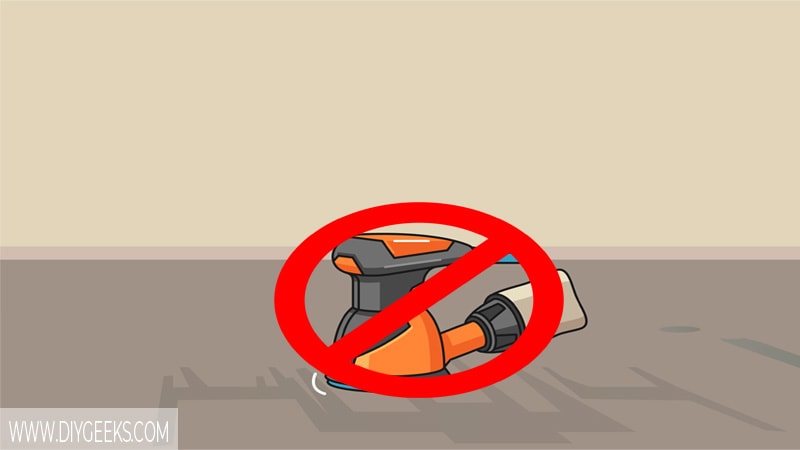
You can paint over varnish without sanding if you apply primer over the varnish first. But, the paint adhesion won’t be as good and the finish can peel off gradually.
The primer will cover the varnish coating and imperfections on the surface, and provide a base coat for the paint to adhere.
So, you must either sand or remove completely the varnish coating for the paint to adhere properly. Sanding will remove different parts of the finish and create tiny pores (or holes) that paint can adhere to.
